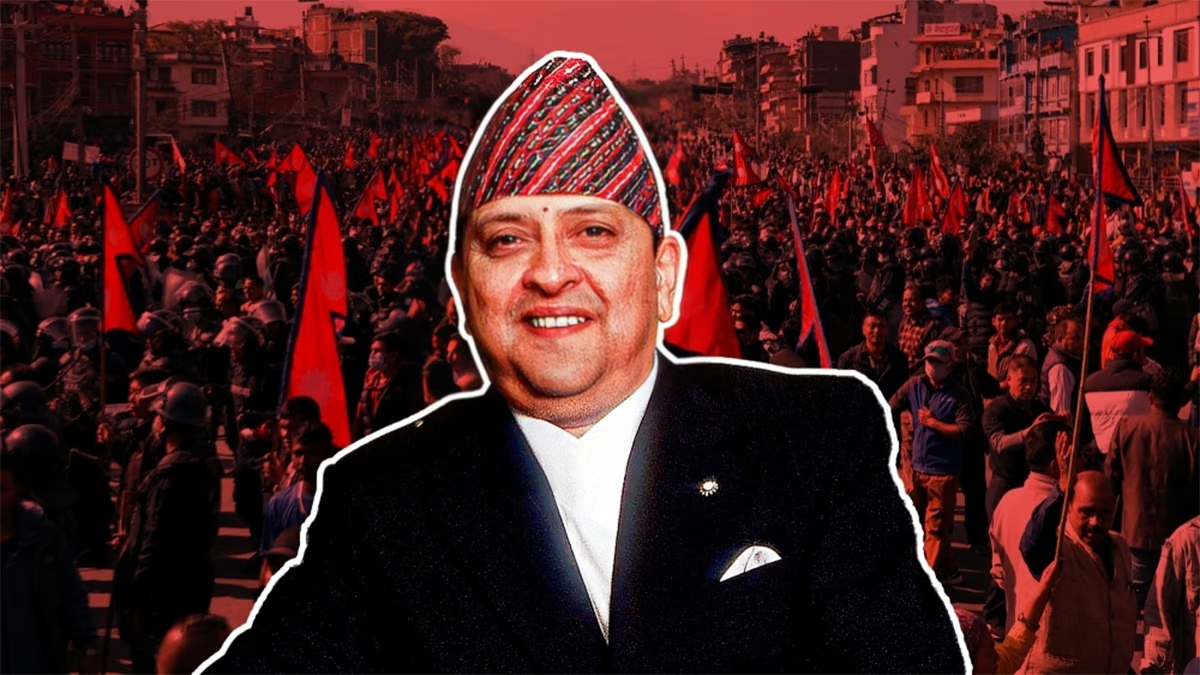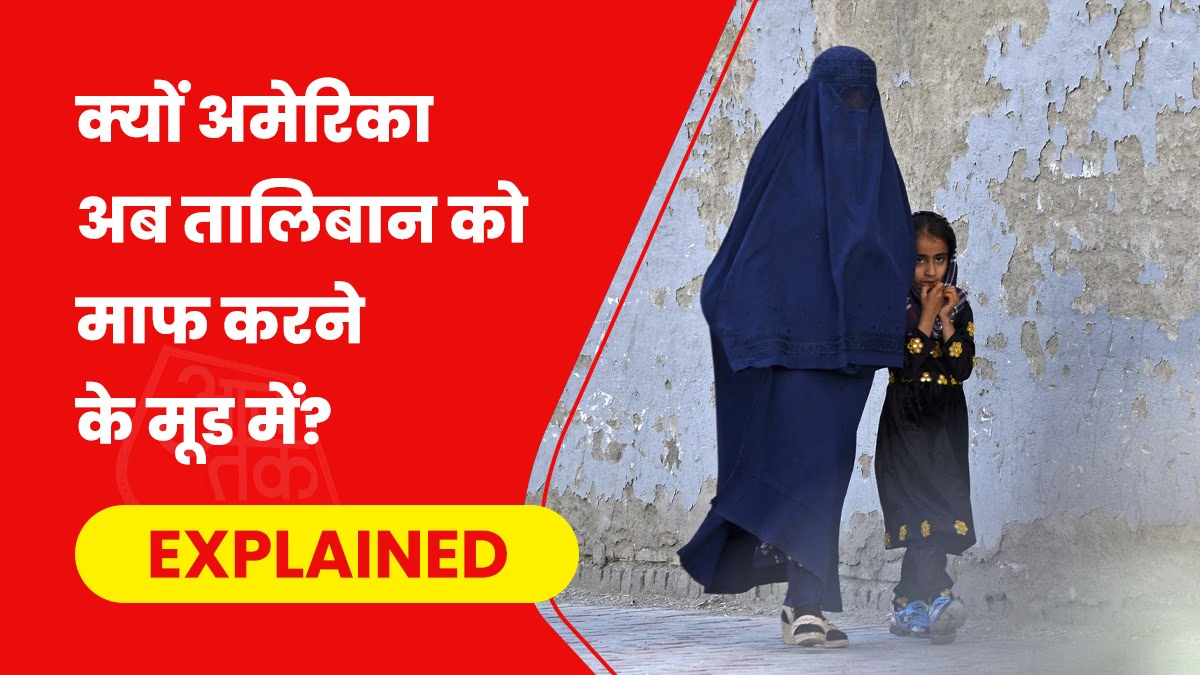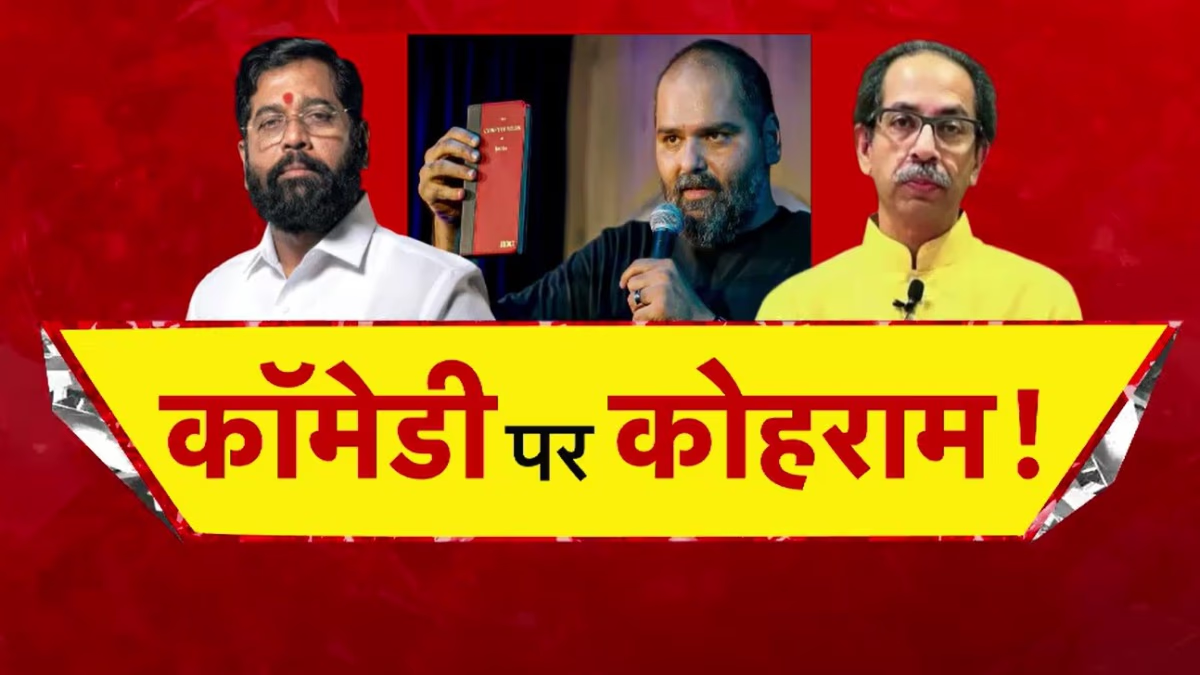A massive crowd of 10,000 enthusiastic individuals has gathered beginning from the main entrance of Kathmandu's Tribhuvan International Airport. The air is charged with excitement as people await the arrival of a figure they are eager to catch a glimpse of. Some wish to shake hands, others shout slogans. The crowd cries,
'Clear Narayanhiti, Our King is Coming,' meaning vacate the royal palace, our king is on his way.
The crowd chants further,
'Hail Pashupatinath, a warm welcome to our king
,' meaning hail Pashupatinath, our king is warmly welcomed.
The personality whom the crowd of 10,000 has gathered at Tribhuvan International Airport to welcome is none other than former King of Nepal, Gyanendra Shah. The gathering shouts slogans for the return of Hindu nationhood and monarchy in Nepal, welcoming the former king.
Former King Gyanendra Shah has returned to Kathmandu after a two-month stay in Nepal's tourist haven Pokhara. Talk of the town is Gyanendra Shah's keen interest in a political comeback. During his time in Pokhara, Shah visited over a dozen temples and holy sites, attempting to gauge public sentiment.
Sixteen years ago, Nepal was the world's sole Hindu nation, with Gyanendra Shah as its king until 2008. However, after a Maoist movement and an alleged leftist revolution, a political transition in this Indian neighbor led to Gyanendra Shah's abdication. Now, monarchy supporters in Nepal are demanding the reinstatement of the royal governance system.
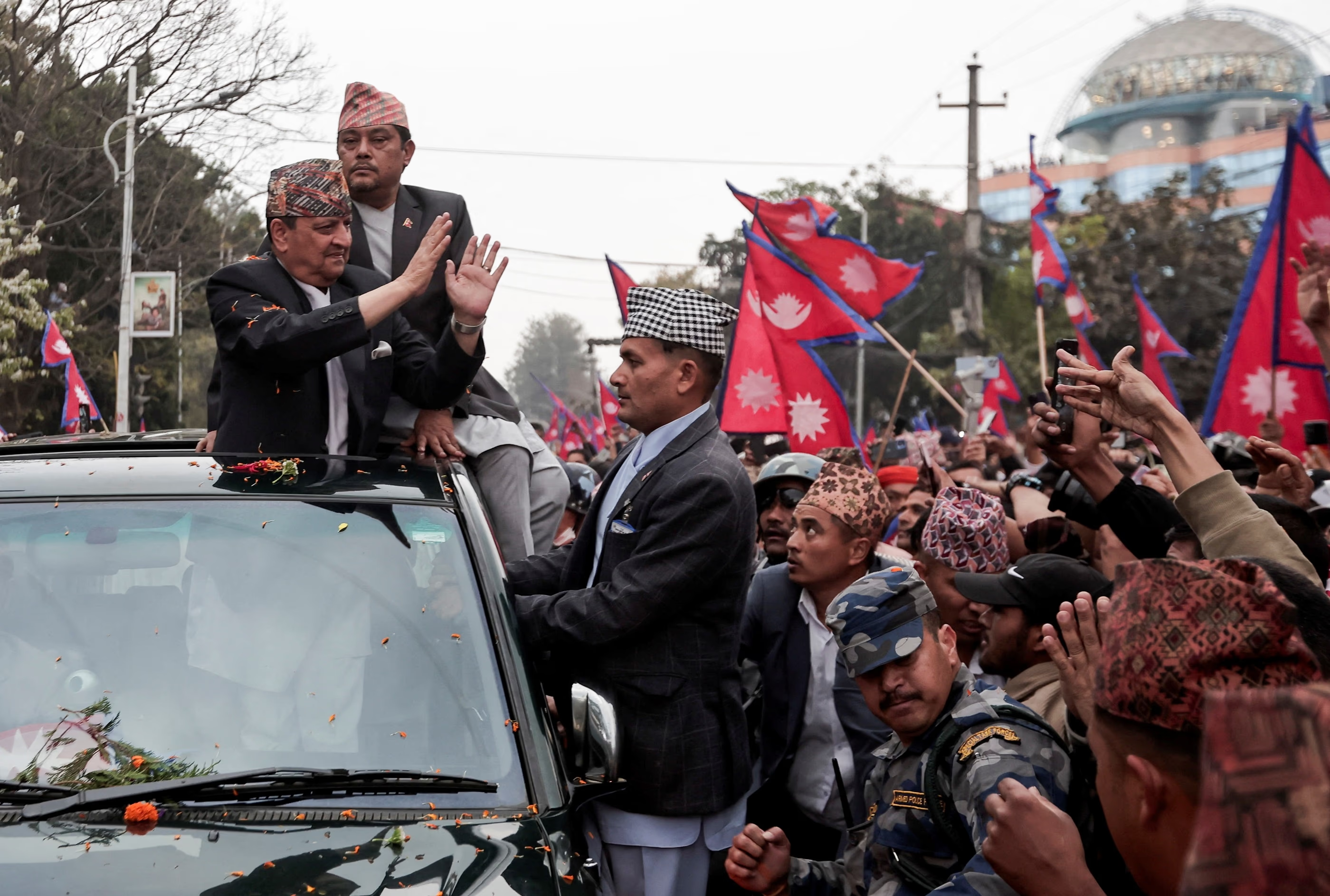
Source: aajtak
RPP's Support for Hindu Nation and Monarchy
A significant political party is rallying support around Gyanendra Shah for a change in governance. This party is the Rastriya Prajatantra Party (RPP). Since its inception, the Rastriya Prajatantra Party has advocated for a Hindu nation and monarchy in Nepal, believing that these two are complementary for Nepal.
For reference, in 2008, the RPP secured 8 seats in the Constituent Assembly out of 575 in parliament. In 2013 elections, it managed to secure 13 seats. By 2017, it was reduced to one seat, but bounced back to 14 seats in the 2022 elections.
RPP's senior vice president, Rabindra Mishra, informed the BBC that his party advocates for monarchy in Nepal, stating, "The current system disenchants people. Now, they're reminiscing old days. After the shift in 2008, King Gyanendra is no longer seen as a villain in Nepal."
After former King Gyanendra Shah's return to Kathmandu, senior RPP leaders welcomed him at the airport. It took Gyanendra Shah two and a half hours to reach his residence at Nirmal Niwas amid an atmosphere similar to rallies.
The king was welcomed, and slogans were raised. According to the Times of India, citing an eyewitness from the rally, people have grown disillusioned with the new system. A carpenter named Kulraj Shrestha mentioned how he was part of the protest 16 years ago to end monarchy. He expected change, yet feels disappointed as things remain unchanged, prompting a shift in his views.
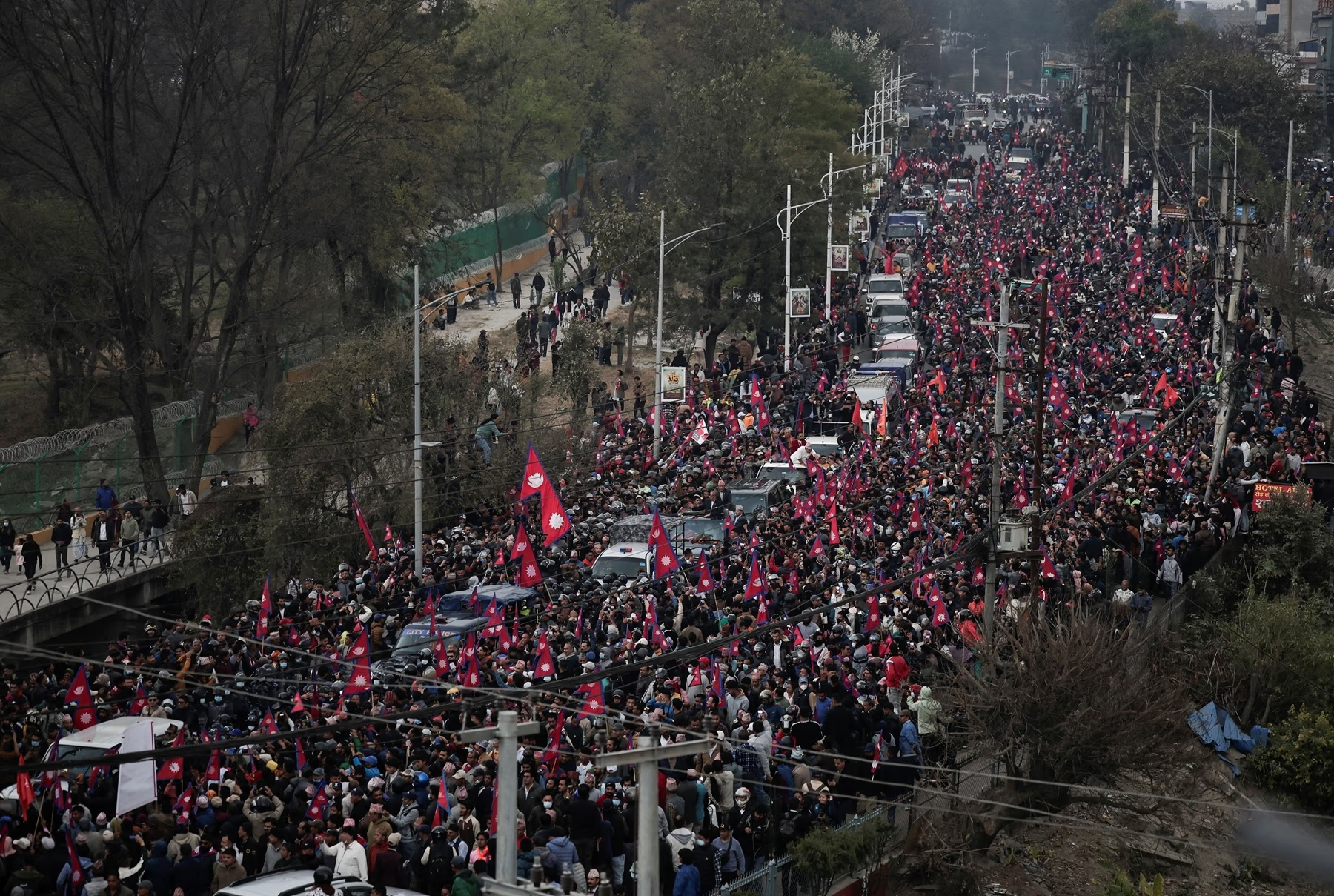
Source: aajtak
Like Kulraj, millions of Nepalis long for the past. A participant named Rajendra Kunwar emphasized the country's instability, rising prices, worsening healthcare and education. He cited lack of food for the poor, laws benefiting the rich, thus the demand for the king's return.
Thirteen Governments Since 2008
Since democractic restoration in 2008, this neighboring nation of India has witnessed continuous political instability, having changed thirteen governments. The abandonment of a 240-year-long monarchy cost many sacrifices. The unrest devastated the tourism-dependent state’s economy, causing 16,000 deaths. Notably, the 2022 census states that Nepal, nestled in the Himalayas, has a population of approximately 30.55 million, with 81.19% being Hindu.
Is Monarchy's Return Possible in Nepal?
Though chants of 'King Come, Save the Nation' echo, the reality without parliamentary support makes it challenging. As noted by the editor of renowned Nepalese newspaper Kantipur, Umesh Chauhan, "There’s public discontent with the present government, and while people search for alternative politics, finding a solid alternative remains elusive. This dissatisfaction seeks to amass under monarchic sympathy, which I doubt will revert to monarchy."
India's former ambassador to Nepal, Ranjit Rae, acknowledges the discouragement among Nepalese, "Though governments failed their people’s expectations, it's uncertain if monarchy can lift them from this dejection; support is minimal." Constitutional revival of monarchy demands significant amendments and public endorsement, currently appearing unlikely.
Challenge from PM O.P. Sharma Oli
Nepal's Prime Minister K.P. Sharma Oli has challenged former King Gyanendra Shah to join mainstream politics. Oli accuses Shah of disrupting harmony and expressed his stance in a Far-Western Province Assembly meeting, "He doesn’t adhere to the constitution, law, democracy, or procedures. Instead, he claims 'support me to save the nation.' The country faces instability due to his instigated activities pushing it towards anarchy."
He stated if Gyanendra wishes to enter politics, he is welcome, challenging him to contest elections, embracing a constitutional political pathway.
Nepal’s Movement
Enduring public wrath, former King Gyanendra now keeps speeches minimal. Despite no direct comments on the request for Hindu nation and monarchy's return, he’s waded into the conversation concerning Nepal’s future. His increasing public appearances, without engaging in overt political statements, hint at maneuvering for a political comeback.
Notably, Gyanendra became king in 2002 after the 2001 royal massacre in which his brother and family members were killed, nearly blamed on prince Dipendra, who committed suicide. Gyanendra grew unpopular, triggering dissent against him.
After the 2006 People's Movement and Maoist insurgency, Gyanendra formally dissolved constitutional monarchy and, seizing power, disbanded government and parliament, using the army to declare emergency rule. This sparked an intensified leftist movement, ultimately abolishing monarchy in 2008.
